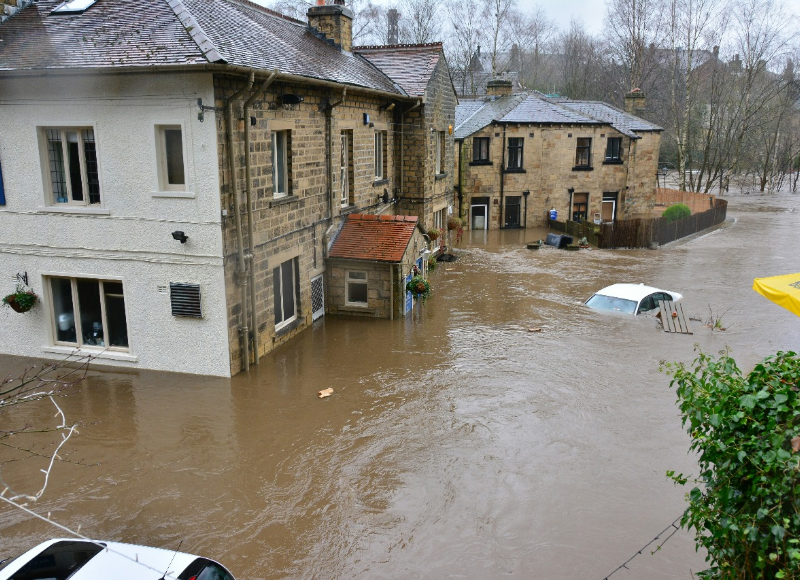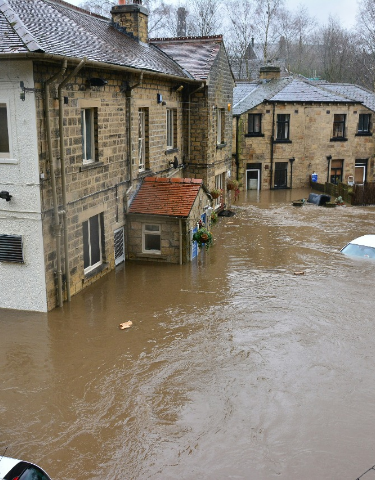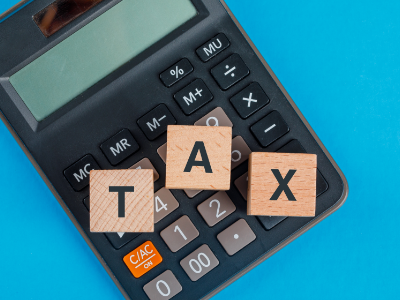Introduction
In an era defined by climate volatility and unforeseen catastrophes, the imperative for robust risk management has transcended mere corporate governance to become a foundational element of survival. The recent, tragic case of the Sher-e-Punjab restaurant in Manali, Himachal Pradesh, provides a compelling microcosm of this reality. As heavy monsoon rains triggered flash floods and landslides, the establishment was swept away, a reminder of the extreme vulnerability faced by businesses operating in disaster-prone geographies. The catastrophe, while seemingly an act of nature, was a predictable consequence of unmitigated geographical, operational, and financial risks. This blog deconstructs this event through the lens of enterprise risk management in the hospitality industry, offering a blueprint for enhancing disaster resilience and ensuring business continuity.
Risk Identification
An analysis of the Sher-e-Punjab Restaurant case reveals a tapestry of interconnected risks that compounded into a catastrophic failure.
- Geographical and Environmental Risk: The primary hazard was the restaurant’s location in a geologically unstable, flood-prone river valley. This exposed the business to the existential threats of flash floods, river erosion, and landslides. This is a classic example of location-based risk, a core tenet of disaster management.
- Physical and Asset Risk: The most immediate consequence was the complete destruction of physical assets, including the building structure, kitchen equipment, furniture, and inventory. The lack of structural resilience and flood-proof design made the business’s tangible assets irrecoverable.
- Operational and Supply Chain Risk: The flood not only destroyed the business but also severed critical supply chains. Access roads were blocked, preventing the delivery of raw materials and the movement of staff. This highlights how operational risk and infrastructure failure affect operational continuity.
- Financial Risk: The financial fallout includes the complete loss of revenue, the unrecoverable cost of destroyed assets, and the potential for a long-term closure. Inadequate or nonexistent disaster-specific insurance coverage would further exacerbate this risk, leaving the owners to bear the full financial burden of reconstruction. Such incidents highlight the importance of including financial risk management in a business strategy.
- Human Capital Risk: The safety and well-being of employees and customers is paramount. In this case, there was a significant risk of injury or death. Furthermore, the incident creates a long-term human resource challenge, as staff members lose their livelihood and psychological distress becomes a factor in recovery.
- Reputational and Brand Risk: The destruction of a well-known establishment carries a severe reputational risk. While the initial public response may be sympathetic, an inability to rebuild or a perceived lack of preparedness can erode customer trust and brand value in the long term.
Disaster Risk Reduction Strategies for the Restaurant Industry
A proactive approach to disaster risk reduction (DRR) in the restaurant industry requires a multi-faceted strategy encompassing structural, systemic, and managerial components. Some of the risk management strategies restaurants can adopt are as follows –
Structural and Systems Design
- Restaurants in high-risk areas should adopt resilient design principles to avoid flood risk. This includes constructing buildings on elevated platforms or stilts to mitigate flood damage, using reinforced materials, and incorporating break-away walls that allow water to pass through without compromising the main structure.
- The integration of modern technology is critical. Restaurants can deploy Internet of Things (IoT) sensors at high-risk locations, such as riverbanks, to monitor real-time weather changes. These low-cost, battery-powered devices can be set up to send automated alerts via SMS, email, or a dedicated app when predefined thresholds are breached. For example, a sensor could send a “Pre-Alert” at a 1-meter rise in the water level and a “Critical Alert” at a 2-meter rise, giving staff a crucial window of time for safe evacuation and asset preservation. Data from these local sensors can be integrated with broader data from services like the India Meteorological Department (IMD) or other weather Application Programming Interfaces (APIs). This creates a powerful predictive model. Machine learning algorithms can analyze historical data to predict the likelihood and severity of a disaster hours or even days in advance.
- Technologies like Automated Response Systems can automate response protocols. A “Critical Alert” from a sensor could automatically trigger an emergency evacuation checklist, send pre-scripted messages to all staff, and notify a pre-designated emergency team. This eliminates the time lag and potential for human error in a high-stress situation.
- Beyond standard fire protection, disaster-resilient systems include robust evacuation plans, reinforced safe rooms, and emergency power backup systems. These systems are designed to protect human life even when the structural integrity of the building is compromised.
- Critical business data, such as supplier lists, financial records, employee information, and proprietary recipes, should be stored on a cloud-based platform to ensure accessibility and business continuity after a physical disaster.
Management Risk Reduction Planning
- Training and Drills – All employees must undergo regular training on emergency procedures, including evacuation routes, first-aid protocols, and communication strategies. Conducting surprise drills ensures that staff can react effectively under pressure.
- Communications Planning – A detailed communications plan is essential for maintaining contact with employees, informing customers, and liaising with emergency services and local authorities. This plan should include pre-scripted messages and a designated spokesperson.
- Continuity Planning – A Business Continuity Plan (BCP) is the cornerstone of resilience. It outlines the step-by-step process for resuming operations after a disaster. This could involve pre-identified temporary locations, partnerships with other restaurants for shared kitchen space, and a strategy for managing cash flow during the recovery period.
- Financial Resilience – Securing business interruption insurance in addition to standard asset insurance. This is a critical safety net that covers lost revenue and ongoing expenses during a period of closure. The disaster risk management plan can include establishing a contingency fund specifically for disaster response and recovery.
- Exploring alternative operational models – Can the restaurant operate a cloud kitchen in a different, safer zone? Will pivoting to a food truck model be more viable? This prevents the entire business from being a single point of failure.
- Supply Chain Backups – Businesses should map their supply chain and identify key vendors. Having multiple, pre-vetted suppliers for essential ingredients and goods, with a plan to switch to them if a primary supplier is affected by a local disaster is an important step in achieving supply chain resilience.
Applying insights from IRM’s Horizon Scanning guide to the Sher-e-Punjab restaurant case
The Sher-e-Punjab case underscores the need for restaurants to move beyond ad-hoc safety measures and embrace a structured, enterprise-wide approach to risk management, grounded in globally recognized frameworks and principles of Horizon Scanning.
IRM’s Horizon Scanning guide provides a forward-looking lens, encouraging the restaurant industry to identify nascent and emerging risks that may not be immediately apparent. For a business in a flood-prone area, this would involve not just reacting to historical flood data but actively scanning for broader trends such as accelerated glacial melt, changes in monsoon patterns, and upstream infrastructure projects that could alter river dynamics. This proactive foresight is critical for preparing for future climate-related events.
Disaster Resilience lessons from the restaurant industry
A crucial part of disaster preparedness is learning from past events so as to build future resilience. For instance, following Hurricane Katrina, many restaurants in the USA created a cooperative network to share resources and staff during recovery. Others used the disruption to innovate, rebuilding with more resilient materials and diversifying their revenue streams to include catering or online delivery models. These examples illustrate how a crisis, while destructive, can be a catalyst for strategic innovation and the development of a more robust business model.
Conclusion
Disaster risk management should not be a separate, administrative task but an integrated component of a business’s strategic management and planning. A disaster-resilient business model is a key element of competitive advantage and is increasingly valued by investors and conscious consumers. It reflects a commitment to sustainability, employee welfare, and long-term viability. The integration of DRR into strategic planning ensures that decisions on location, construction, and technology are not made in a vacuum but are continuously informed by a proactive risk management mindset.
This incident serves as a powerful and unfortunate reminder that the hospitality industry, particularly in high-risk zones, faces a formidable convergence of natural and operational threats. The tragedy highlights the need for a paradigm shift from reactive crisis management to a proactive and integrated approach to disaster risk reduction and business continuity. By introducing hazard identification and risk assessment techniques and implementing multi-layered mitigation strategies, restaurants can transform their vulnerability into resilience.
The Sher-e-Punjab case is a call to action – a demand to embed risk management in restaurants not as a cost, but as an indispensable investment in the industry’s own future.















